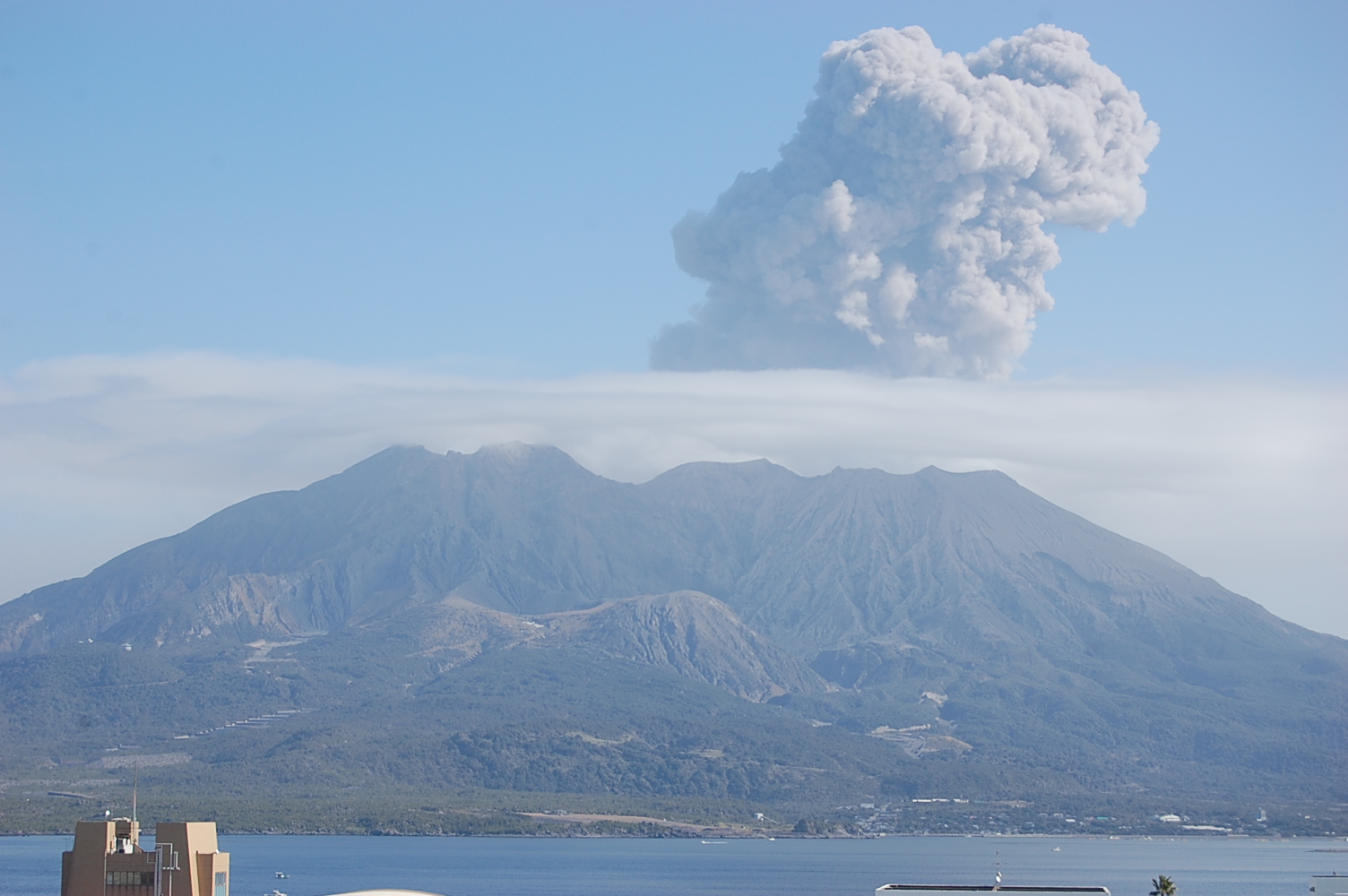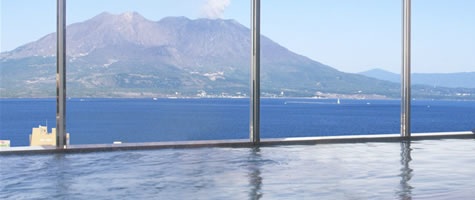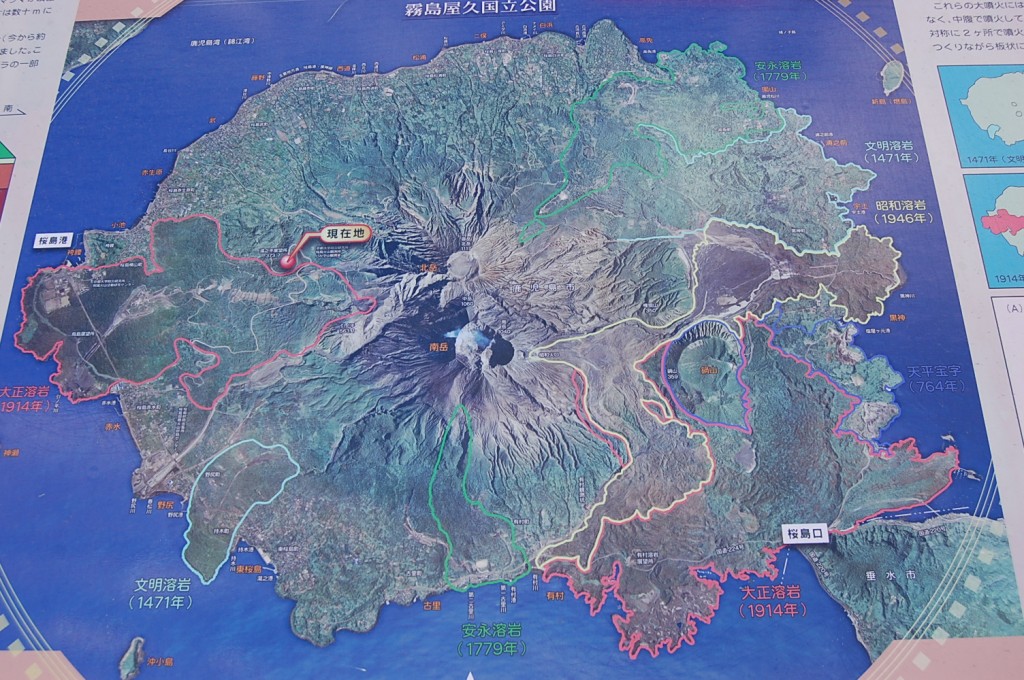

Sakurajima, the volcano in Kagoshima Bay, southern Kyushu, was quite lively over Christmas, venting a great puff of ash around four o’clock each day. On 28th the volcano vented in the morning as well (see photo, above).
When you spend five days in the company of the volcano you begin to notice how much it changes in appearance with the changes in the light and the weather.
I had plenty of time to observe Sakurajima at different times of day while soaking in the Panorama Spa on the 13th floor of the Sun Royal Hotel.
Here’s another photo of Sakurajima at sunset during a major eruption in 2009:

Christmas Eve On Sakurajima
On Christmas Eve we caught a ferry across the bay to Sakurajima. We stopped to bathe our feet in a thermal footbath and visited the local museum before catching a bus up to the observation post halfway up the north-west face of the volcano, on the edge of one of the two major lava fields from the 1914 eruption.
Before visiting the volcano I’d had no idea that it was only joined to Kyushu in 1914 when a major eruption sent lava pouring down two sides of the volcano. The lava flow on the south-east side was so extensive that it created a land bridge connecting the volcano to the Osumi Peninsular.

A Well-Populated Volcano
Another thing that surprised me was the number of people who live on the volcano. It has a population of around 7,000. School kids wear bright yellow hard hats as a precaution against falling debris, and the inhabitants have concrete shelters in their gardens where they can flee in the event of another major eruption.
Sakurajima is also noted for the size of its white radishes and its satsumas. The white radishes are the biggest in Japan, as big and almost as round as a football. The satsumas on the other hand are probably the smallest in Japan, being only about an inch and a half in diameter.
